Welcome to an eerie reality where nature’s darkest nightmares come to life – a realm inhabited not by the supernatural undead of fiction, but by real-life zombies lurking in the shadows of forests, fields, and even the depths of the ocean. From the insidious fungal puppetry of Cordyceps to the parasitic nature of mind-controlling parasites and mites. This natural world teems with chilling examples of creatures that manipulate and hijack the bodies and minds of their hosts, blurring the lines between life and death in a sinister battle of survival and exploitation. Join us as we delve into the spine-tingling depths of nature’s own horror show, where the boundaries between predator and prey, life and death, are disturbingly blurred.
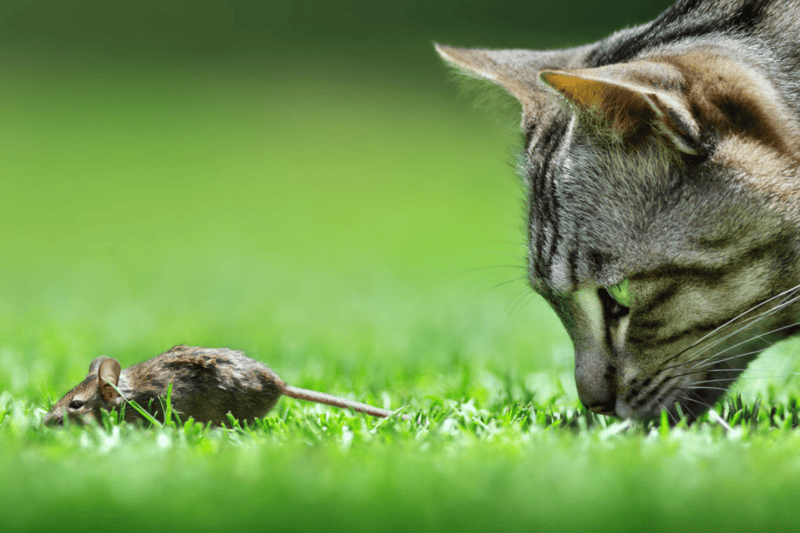
Parasite that Alters Mice Minds
In a groundbreaking revelation, a study published in PLoS ONE unveils the profound influence of Toxoplasma gondii, a ubiquitous parasite. The study focused on the behavior of mice, hinting at potential permanent alterations in specific brain functions even after the parasite becomes undetectable. While known to infect a staggering one-third of the global human population, Toxoplasma’s impact on rodents proves particularly intriguing. Typically, rodents exhibit an innate fear of feline predators, yet Toxoplasma-infected rodents actually display an attraction to cat odors, suggesting a strategic adaptation by the parasite to ensure its transmission.
Furthermore, intriguing parallels between Toxoplasma infection and behavioral changes in humans prompt speculation about therapeutic interventions targeting the parasite’s replication mechanisms, particularly in individuals with schizophrenia who exhibit a higher prevalence of Toxoplasma infection. Central to understanding the enigma of Toxoplasma’s influence is its course of action within the host’s brain. The parasite establishes persistent infections through the formation of microscopic cysts, which may alter neurotransmitter activity, particularly dopamine levels, culminating in profound behavioral shifts. However, recent research challenges conventional wisdom by revealing that the behavioral effects persist long after the parasite becomes undetectable, suggesting a more complex relationship between the parasite and host neurobiology.
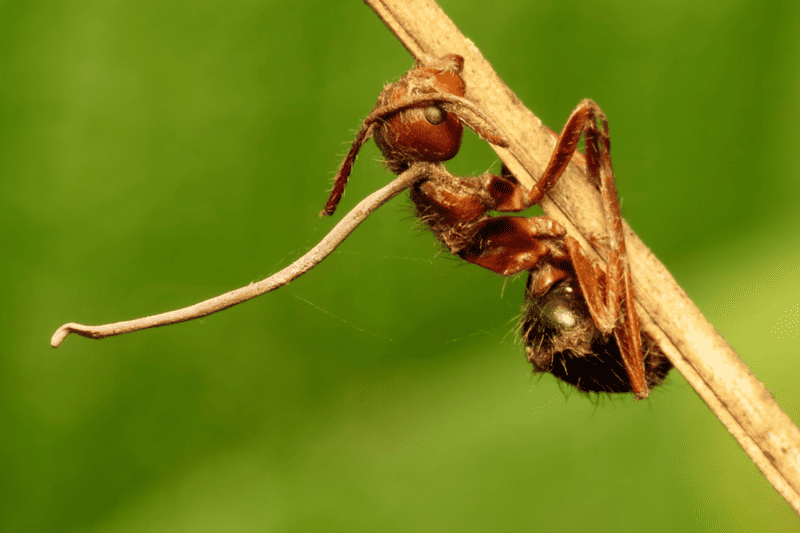
Zombie Ant Fungus
Recently, a team of scientists revealed a groundbreaking insight into the genesis of zombies—specifically, ants manipulated by a cunning fungus. Imagine an unsuspecting ant, navigating its daily routines in the wilderness, only to unwittingly encounter a fungal spore lying in wait. The spore adheres to the ant’s body infiltrating its inner sanctum. Ophiocordyceps are the mastermind behind this sinister plan of action. Quietly, it feeds upon the ant’s vital fluids, multiplying within its host until nearly half its body mass is consumed. Meanwhile, the ant continues its foraging duties, oblivious to the sinister infiltration brewing within.
Upon reaching maturity, Ophiocordyceps executes its final ploy. Fungal cells amass within the ant’s body while dispatching chemical signals to the ant’s brain. Compelled by unseen forces, the ant abandons its colony and ascends a nearby plant. In the tropics, where Ophiocordyceps reigns supreme, this drama unfolds routinely as ants are coerced into high positions before succumbing to the fungus’s bidding. Ultimately, as the ant’s life fades, a towering stalk erupts from its cranium, showering spores upon the forest floor below, perpetuating the cycle of manipulation and death.
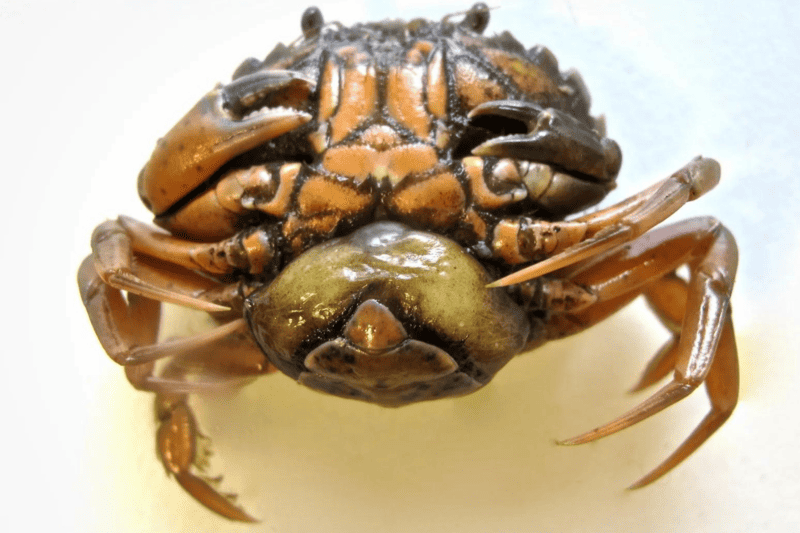
Undead Crabs
Forget human zombies—our oceans harbor a legion of the undead, manipulated by a minuscule yet malevolent mastermind: the parasitic horror known as Rhizocephalan. These spine-chilling parasites aren’t just your average garden-variety worms—they’re crafty infiltrators with a taste for crustacean hosts. Rhizocephalans and their unsuspecting victims, including crabs and shrimp, are all part of the Crustacea family. However, these parasites are the true puppet masters, causing mayhem within their hosts’ bodies. At less than 300 micrometers in size, Rhizocephalans may be small, but their impact is anything but insignificant. Once they’ve infiltrated a host they set up shop in the soft tissues, often targeting the gills for their fiendish purposes. Injecting their own tissues into the host’s bloodstream, they establish root-like structures within the digestive system, siphoning off nutrients like oceanic vampires.
When it’s time to reproduce, these parasites pull off a diabolical scheme. Unable to mate within the host’s body, the female parasite grows a grotesque reproductive organ—called the externa—outside of the host. Male parasites are lured in to fertilize the eggs, birthing a legion of tiny terrors that scatter in search of new hosts to zombify. These delectable creatures, often harvested for their succulent meat, unwittingly become hosts to these parasites. Infected crabs undergo a grotesque transformation, with males feminized and both genders displaying abnormal behaviors, like tending to the parasitic sacs as if they were their own offspring. The horror doesn’t end with physical changes. Infected crabs exhibit bizarre behaviors akin to caring for their own eggs, despite being unwitting carriers of a parasitic plague. Yet, fear not for your seafood feast—proper cooking should neutralize any threat these parasites pose to humans.

Rabies In Humans
The journey of the Rabies virus through its host’s body is a saga rife with intrigue. Upon infection, the virus stealthily infiltrates the peripheral nervous system, utilizing neuronal pathways to ascend towards the brain. This clandestine approach shields it from the host’s immune response, allowing it to propagate undisturbed. However, the toll on the neurons is profound, leading to peripheral neuropathy characterized by sensory loss and muscle dysfunction. Upon reaching the brain, the virus orchestrates its most notorious effects—aggression and irritability. Yet, these behavioral changes serve a strategic purpose.
Biting behavior, driven by heightened aggression, facilitates the virus’s transmission directly into the victim’s nervous system. Meanwhile, within the host’s salivary glands, the virus proliferates, loading the saliva with infectious viral particles, poised to perpetuate its cycle. Historically termed hydrophobia due to its association with aversion to water, Rabies induces a visceral repulsion towards drinking, further enhancing its transmission potential. Although rabies remains a global threat, particularly among mammals, humans are fortunate to have access to vaccines pioneered by Louis Pasteur, heralding a triumph of modern science over this ancient scourge.
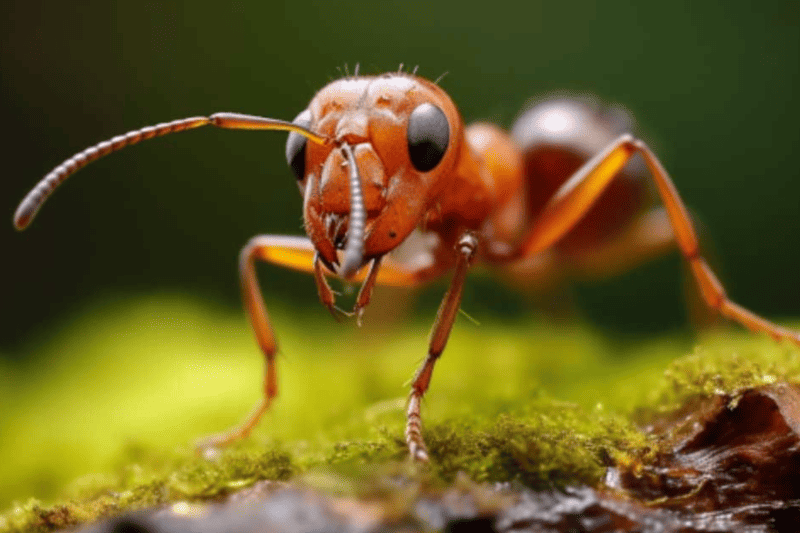
Zombie Ants
In the world of parasites, taking over a host’s body isn’t a new trick. Creatures like the zombie-ant fungus have long been known for making their hosts do strange things, like climbing high before they die. But now, scientists have found something new: a parasitic flatworm that can control its host’s behavior like a light switch, turning its ‘zombie mode’ on and off as needed. Researchers from the University of Copenhagen have uncovered the secrets of this crafty flatworm, known as the Lancet Liver Fluke. It’s a real mastermind, surpassing other parasites in its ability to manipulate its host, a type of ant. Here’s how it works: When the weather is just right, the flatworm takes over the ant’s brain, making it climb up blades of grass. This helps the parasite get to its next home, usually a cow or deer. But when conditions change, the parasite lets go of the ant, and it goes back to normal until it’s time for another takeover.
To unravel the mysteries of this parasite’s tactics, researchers meticulously observed hundreds of infected ants within Denmark’s Bidstrup Forests. They found that the ants behave differently depending on the temperature, jokingly calling it the zombie switch. Even though hundreds of parasites can invade each ant, only one controls its brain. The rest wait inside its belly until it’s their turn. And when the job is done, the lead parasite sacrifices itself so the others can survive. While this parasite doesn’t infect humans often, it can cause serious liver damage in animals. But beyond just being creepy, studying parasites like this helps us understand how they shape nature and who eats what.
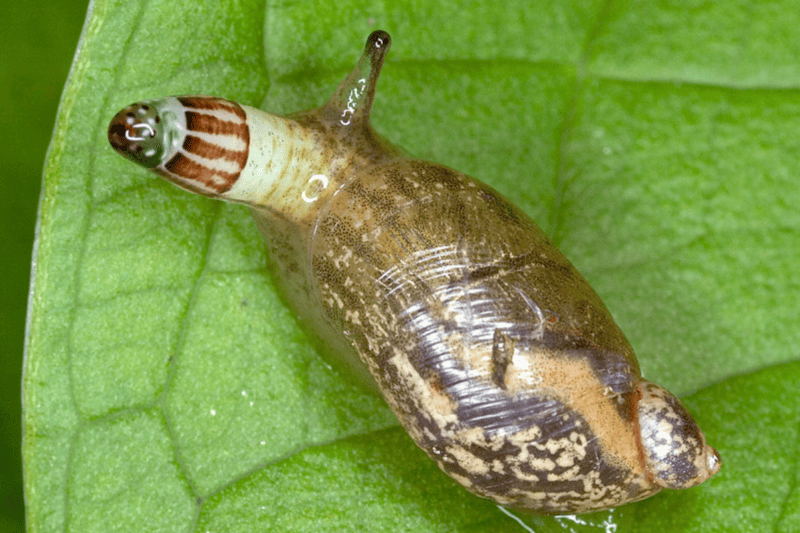
Parasitic Worms Infect Snails
Imagine the plight of the snail, ensnared in a nightmare scripted by Leucochloridium, a diabolical parasitic worm. Invading the snail’s eyestalks, it pulsates, mimicking a tempting caterpillar to lure winged predators. This isn’t just about staying alive; it’s a chilling display of evolutionary cruelty. For over a century, scientists marveled at Leucochloridium’s manipulation until biologist Tomasz Wesołowski uncovered its true horror in 2013.
Within the snail, the worm orchestrates a grotesque spectacle, castrating its host and redirecting energy for its own ends. But the horror doesn’t end there. Leucochloridium takes control, compelling the snail into the dangerous daylight, where predators lurk. The method behind this manipulation baffles scientists, shrouded in mystery like many other parasitic enigmas. Wesołowski’s research reveals the extent of the snail’s torment: infected individuals become hyperactive, climbing to perilous heights in a frenzied bid to attract bird predators. Yet, amidst this horror, the snail survives, regenerating lost parts to become a vessel for more parasites. Leucochloridium and its kin have mastered the art of parasitic manipulation, perpetuating their cycle of horror with chilling efficiency.

Zombie Infecting Worm
In the University of New Mexico laboratory, biologist Ben Hanelt and his team delve into the cryptic world of Nematomorphs. These are enigmatic parasites that wield unparalleled control over their hosts. Nematomorphs, also known as horsehair worms, are sinister operators within the realm of parasitism. Their strategy is as ingenious as it is insidious: infiltrate unsuspecting hosts, feed discreetly, and orchestrate a grand finale that ensures their survival. At the heart of their parasitic strategy lies a remarkable ability to influence the behavior of their hosts. Once inside a cricket or grasshopper, Nematomorphs remain incognito, subtly draining nutrients without triggering alarm. It’s only when they reach maturity that their true agenda unfolds. When the time is right, these master manipulators compel their hosts to seek out water, a crucial element for the Nematomorph’s reproductive cycle. With eerie precision, infected insects embark on a final journey, driven by an irresistible urge implanted by their parasitic overlords.
These elusive parasites are ubiquitous, inhabiting diverse ecosystems worldwide. From cattle troughs to mountain streams, their presence is a testament to nature’s capacity for both wonder and terror. Hanelt’s research unveils the complex mechanisms behind Nematomorph manipulation. Through meticulous experimentation, he exposes the worms’ ability to discern environmental cues and orchestrate their escape strategy with uncanny precision. Yet, the influence of Nematomorphs transcends mere biological intrigue. Their parasitic machinations reverberate through entire ecosystems, reshaping the dynamics of predator-prey relationships and influencing the behavior of host populations.
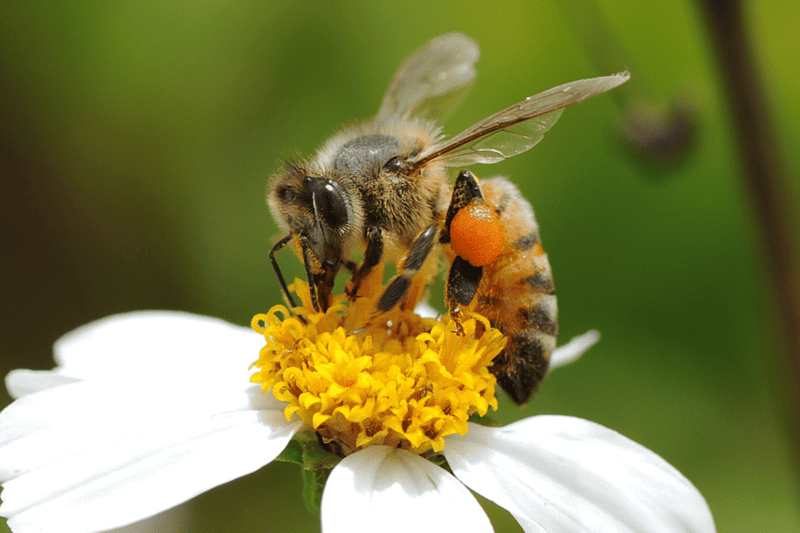
Fly Parasite in Honeybees
Honey bees are falling victim to a fly parasite that thrusts them into a state of disoriented frenzy, reminiscent of the living dead. Researchers at San Francisco State University stumbled upon this eerie phenomenon, shedding light on a potential link to the enigmatic Colony Collapse Disorder (CCD) that has plagued honey bee colonies nationwide since 2006. In a routine search for insects scientists uncovered a vial teeming with fly pupae swarming around unsuspecting bees. The culprit? Apocephalus borealis, a fly that deposits its eggs within a bee’s abdomen, ultimately leading to a grim fate. What’s truly baffling is the bees’ behavior post-parasitization. Afflicted bees abandon their hives, embarking on a nocturnal pilgrimage towards light sources, displaying erratic movements and a stark lack of direction. Andrew Core, a graduate student spearheading the study, likened their behavior to that of zombies, a poignant metaphor for the surreal scene unfolding within the hive.
Moreover, genetic analysis revealed a sinister partnership between the parasite and other pathogens like deformed wing virus and Nosema ceranae fungus, both implicated in CCD. Could this fly parasite be the missing puzzle piece in the CCD mystery? The quest for answers intensifies as researchers delve deeper into understanding the mechanisms driving this parasitic takeover. Intriguing questions linger: How does the parasite manipulate the bees’ behavior? Are infected bees ousted by their hive mates or compelled to leave of their own accord? The hunt for solutions entails deploying cutting-edge tools, from miniature radio tags to meticulous video monitoring, to decode this cryptic phenomenon and safeguard bee populations.
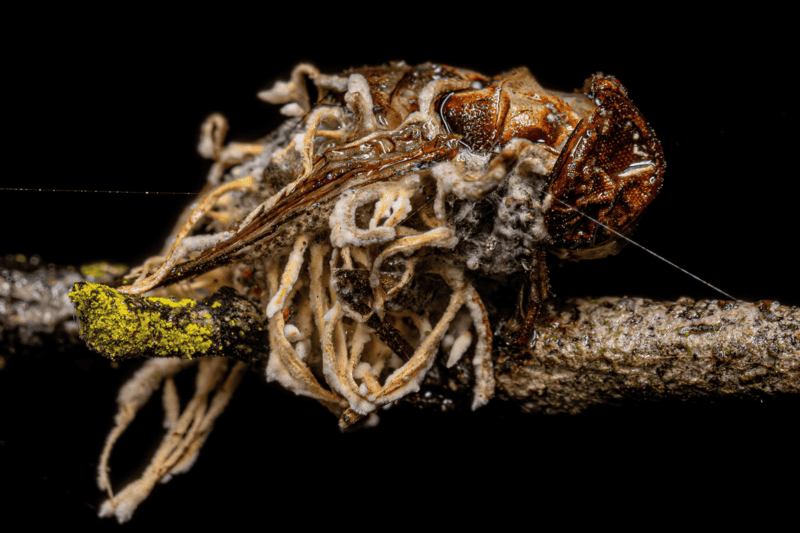
Cordyceps Fungi Can Turn Insects Into Zombies
Cordyceps fungi are masters of zombie parasitism. These fungal puppeteers infiltrate their unsuspecting hosts, compelling them to carry out dangerous behaviors that serve the fungi’s sinister agenda. This fungal parasite infects ants, hijacking their nervous systems and driving them to climb to elevated positions before sprouting from their bodies in a grotesque display of fungal fruiting bodies. From this vantage point, the fungi release spores, infecting more ants and perpetuating the cycle of parasitism. But Cordyceps doesn’t limit its reign of terror to ants alone. This genus comprises a diverse array of species, each specializing in parasitizing a particular host. From butterflies to beetles, Cordyceps fungi exhibit a remarkable ability to manipulate the behavior of their victims, ensuring the propagation of their spores and the continuation of their life cycle.
While the thought of Cordyceps fungi turning humans into zombies may evoke nightmarish visions, experts assure us that such scenarios are purely the stuff of fiction. Cordyceps fungi exhibit a high degree of host specificity, targeting only specific insect species and leaving humans unscathed. However, the sinister allure of Cordyceps serves as a warning of the power of nature to orchestrate tales of horror and intrigue. As our planet faces the dual threats of climate change and emerging diseases, the study of these fungal parasites offers invaluable insights into the connection between pathogens and their hosts. In the end, Cordyceps fungi are a testament to the extraordinary diversity and ingenuity of life on Earth.
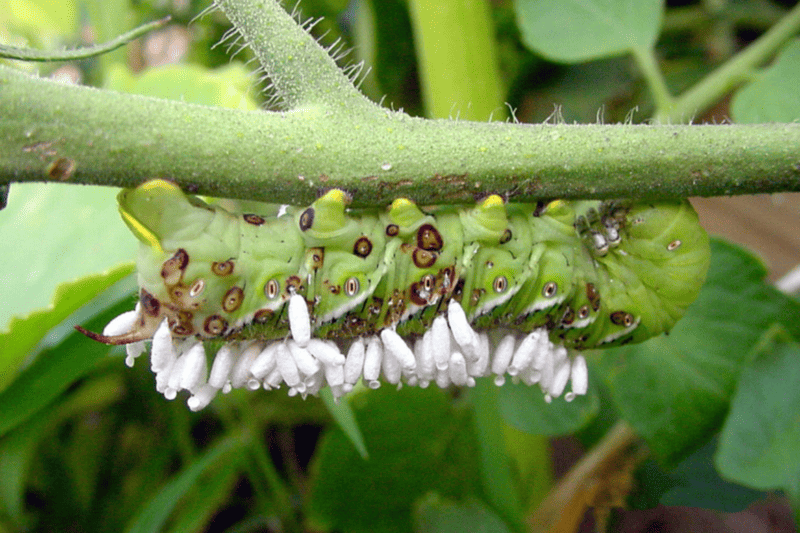
Zombifying Parasitoid Wasps
Amidst the buzzing of bees and the fluttering of butterflies, lies a realm largely unseen yet profoundly influential: the realm of Parasitoid Wasps. These tiny yet formidable creatures, ranging from minuscule Trichogramma spp. to the colossal Giant Ichneumon Wasp, wield an arsenal of biological weaponry that rivals even the most chilling horror tales. With their slender bodies and formidable ovipositors, they embark on a gruesome journey into the lives of unsuspecting hosts, turning them into unwitting vessels. They often target a single host species, infiltrating their bodies with eggs that hatch into voracious larvae. Whether developing internally or externally, these parasitic progeny ultimately spell doom for their unwitting hosts. Gardeners may unwittingly stumble upon these grim scenes, encountering aphid mummies or the telltale signs of Braconid Wasp cocoons.
Some species, like Aphidius Colemani and Trichogramma spp., are allies in the war against agricultural pests, offering a natural alternative to chemical pesticides. Their efficacy, however, hinges upon the delicate balance of nature, where the presence of diverse floral resources and the preservation of parasitized hosts are paramount. Yet, despite their crucial role, Parasitoid Wasps often dwell in the shadows of obscurity, their importance overlooked and their populations imperiled. Conservation efforts must extend beyond the cessation of broad-spectrum insecticides to encompass the nurturing of habitats that sustain these unsung heroes.
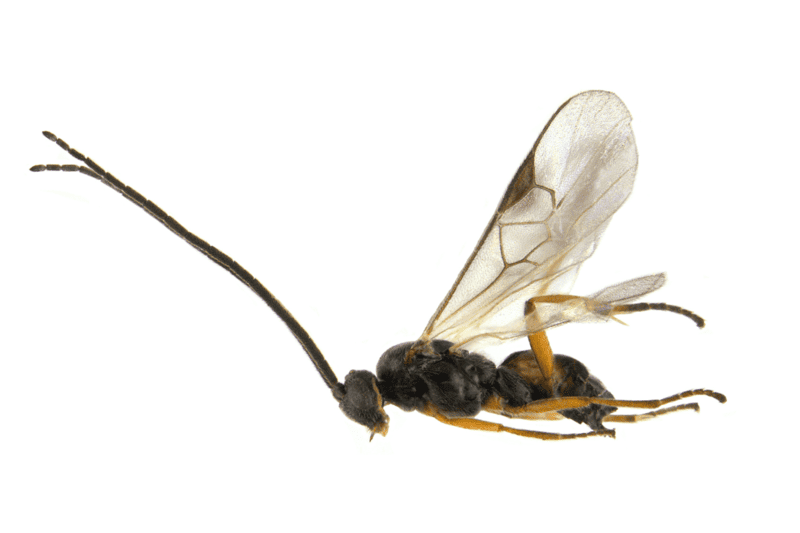
Parasitic Wasp Infect Caterpillars
Within the eerie realm of nature’s mysteries lies the twisted reality of zombie parasitoid wasps. Among these sinister entities, the wasps of the Glyptapanteles genus reign supreme, injecting their eggs into unwitting caterpillars to initiate a macabre lifecycle that defies comprehension. As the larvae mature within their unsuspecting hosts, they feed voraciously, eventually emerging en masse, leaving behind a husk of their former sanctuary. Remarkably, the caterpillar survives this ordeal, manipulated into serving as bodyguards for the emerging wasps until its inevitable demise, sacrificing itself to ensure the survival of its tormentors.
Intrigued by this grotesque display of life and death, ecologist Arne Janssen of the University of Amsterdam delved into the depths of this phenomenon. His groundbreaking research unveiled the intense mechanisms behind Glyptapanteles’ manipulation tactics, shedding light on the evolutionary strategies employed by these sinister parasites. From the ruthless assault of the female wasp to the sacrificial guardianship of the manipulated caterpillar, this tale of parasitic horror offers a glimpse into life where even the darkest shadows harbor shades of altruism and sacrifice.
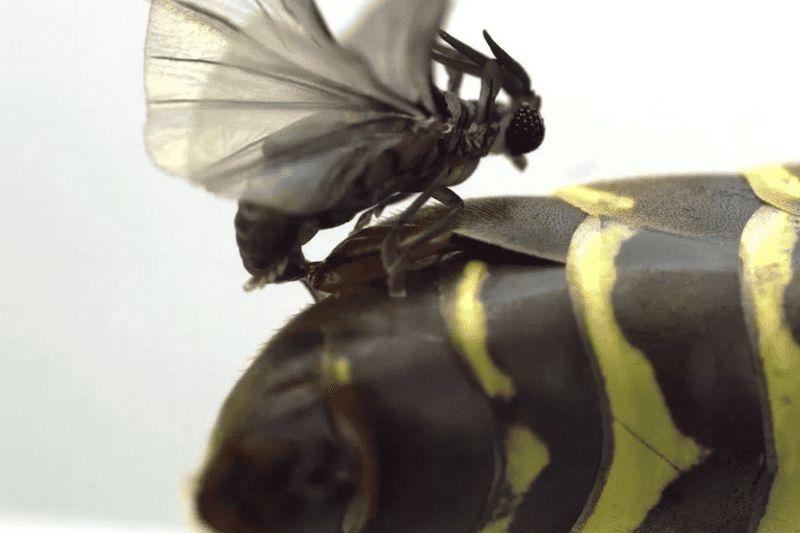
Twisted Winged Parasites
This is the nefarious Strepsiptera parasite. It spends its life lurking within the bodies of unsuspecting insect hosts until death. While most Strepsiptera species cozy up to a single host species, there are those that play a double game, with males cozying up to ants while females cozy up to crickets and grasshoppers, adding an extra layer of mystery to their already bizarre tale. Adult males emerge from their pupal stage and their unfortunate host, equipped with a singular pair of hindwings and halteres, resembling a twisted version of a common fly. Meanwhile, the females retain a larval appearance even into adulthood, a disturbing visual akin to a perpetually young creature with the maturity of a seasoned predator. But it’s their mating ritual that truly sends shivers down the spine. Males inject their sperm directly into the females’ heads, a process aptly termed traumatic insemination, sealing the fate of their unsuspecting hosts. The fertilized eggs then develop into larvae within the female host, devouring her from the inside out until they are ready to make their gruesome exit.
These larvae, despite their minuscule size, possess an uncanny intelligence, with a brain-to-body ratio that puts even humans to shame. Using their sticky feet to latch onto new hosts, they unleash a cocktail of enzymes to dissolve their victims’ exoskeletons, fashioning a grotesque chamber within their flesh—a chilling spectacle straight out of a horror flick. The tale of Stylopization, the technical term for Strepsiptera infestation, unfolds with symptoms of sterility and behavioral changes in the hapless hosts, transforming them into unwitting accomplices in the parasites’ dastardly schemes. However, fear not, for these creatures have a taste solely for insect flesh, leaving vertebrates untouched by their sinister grasp.
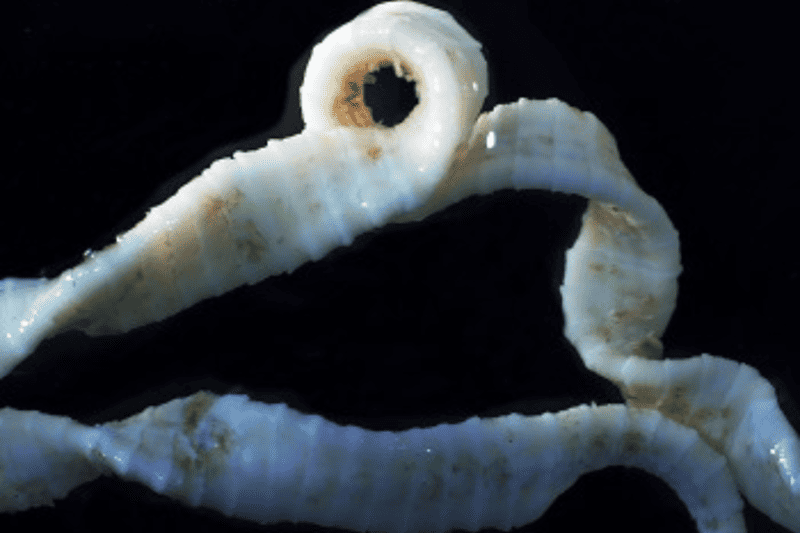
Parasitic Worms in Fish
Dubbed the “Death Worm from the deep,” this enigmatic species, formally known as Diphyllobothrium fervio, has sparked a wave of fascination and dread in equal measure. The Zombie Fish Worm wreaks havoc on unsuspecting humans who dare to indulge in undercooked seafood delicacies. Upon ingestion, it launches a silent invasion, commandeering the host’s nervous system and transforms the victim into a puppet of its will. The catastrophic consequences of this parasitic manipulation led to the infamous Zombie Fish Worm Outbreak of 2017, a harrowing event that etched its name in medical history as one of mankind’s darkest pandemics, drawing urgent attention from global health authorities. Similar to its tapeworm relatives, such as Taenia and Diphyllobotrium latum, the Zombie Fish Worm exhibits a distinctive preference for seawater hosts, setting it apart in parasitology. Its favored prey includes illustrious ocean denizens like tuna, mackerel, and salmon.
The life cycle of this parasitic fiend mirrors that of its freshwater counterpart, D. latum, charting a perilous journey from eggs excreted by infected hosts to the eventual consumption by unwitting humans. Once ingested, the larvae embark on a clandestine odyssey through the host’s body, culminating in the insidious takeover of its neurological command center—a chilling testament to nature’s capacity for subversion. Diagnosing and treating this parasitic scourge prove to be Herculean tasks, with conventional deworming medications offering only fleeting respite against its relentless onslaught. For those ensnared in its grip, the only recourse lies in the grim reality of euthanasia—a stark reminder of the dire consequences wrought by nature’s dark creations. In the face of this existential threat, prevention emerges as the ultimate bulwark against the encroaching tide of zombification.
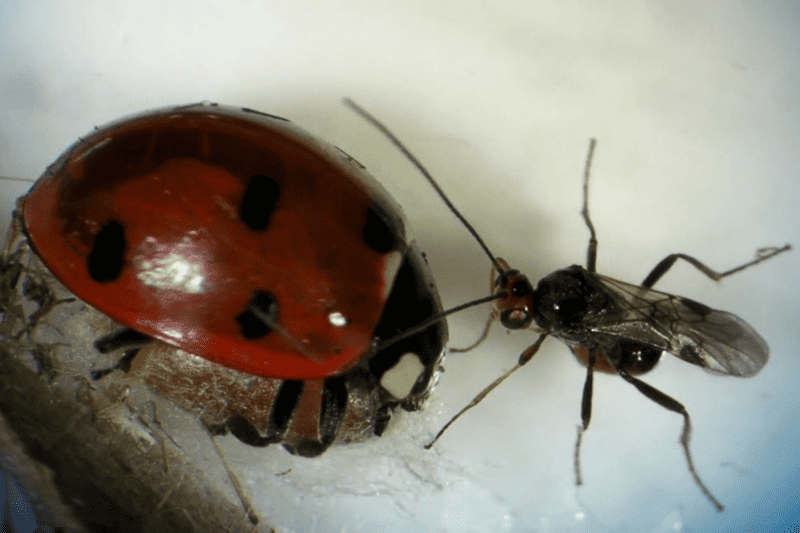
Parasitic Wasp Infects Ladybugs
The parasitic wasp Dinocampus Coccinellae employs a chilling yet masterful strategy in nature. It targets the spotted lady beetle Coleomegilla Maculata, depositing a single egg in its abdomen. Over about twenty days, the larva consumes the host’s tissues but leaves it partially paralyzed. As the larva emerges, the ladybug becomes a sentinel guarding the cocoon spun between its legs. This manipulation affects the wasp’s reproductive capabilities, revealing the intricate dynamics of nature’s strategies.
Scientists are bewildered by the reversible manipulation of ladybugs by parasitic wasps. Some manipulated ladybugs return to normal behavior after the wasp emerges, a rare occurrence. Research suggests larval secretions coerce the ladybugs into protecting the cocoon. Scientists validate a model showing a balance between wasp reproduction and manipulation of the host. A negative correlation exists between the duration of ladybug guardianship and wasp fertility, revealing evolutionary trade-offs. This reveals the dark marvels and delicate equilibrium of nature’s complexities.
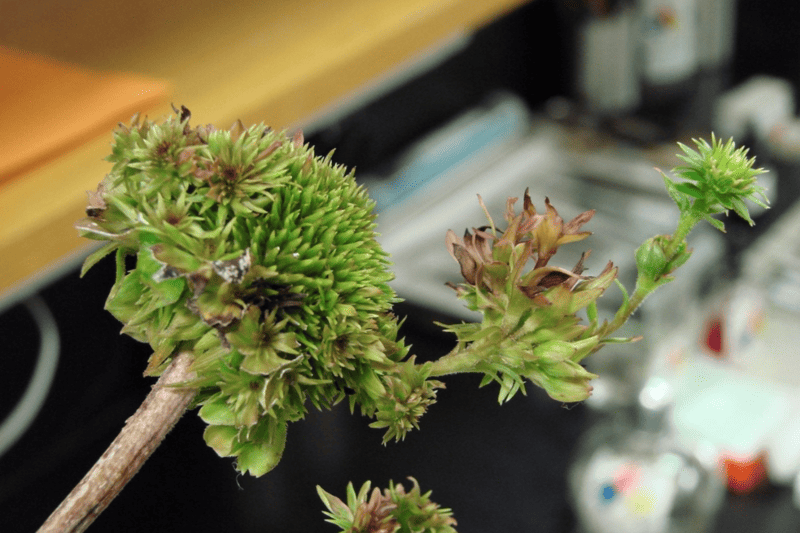
Bacteria Turns Plants to Zombies
Zombie plants, manipulated by a parasitic bacterium called Phytoplasmas, showcase nature’s eerie intricacies. The bacterium transforms Madagascar rosy periwinkle blooms into leafy shoots, using a protein called SAP54 to hijack the plant’s developmental program. Scientists at the John Innes Centre in Norwich, UK, uncover this sinister mechanism, revealing how the infected plants lure sap-sucking insects to spread the parasitic infection. This tale of botanical takeover unveils nature’s dark complexities beyond horror fiction.
“It’s a dual control strategy,” notes parasitologist David Hughes of Pennsylvania State University. “The bacteria manipulate both plant and insect simultaneously with the same protein – that’s stunning.” Nature’s dark beauty lies in its intricate schemes, where parasites exploit evolution to their advantage. This discovery goes beyond understanding botanical takeover; it reveals links between a plant’s development and its immune system, offering insights for crop improvement and pest resistance. Parasites like the rust fungus Puccinia Monoica lurk, turning hosts into unwitting spreaders. The mysteries of these botanical marionettes beg further investigation, promising chilling revelations. Amid life and death, zombie plants show life’s resilience and adaptability, even in sinister forms. Scientists uncover secrets blurring science and folklore, exposing nature’s dark repertoire.
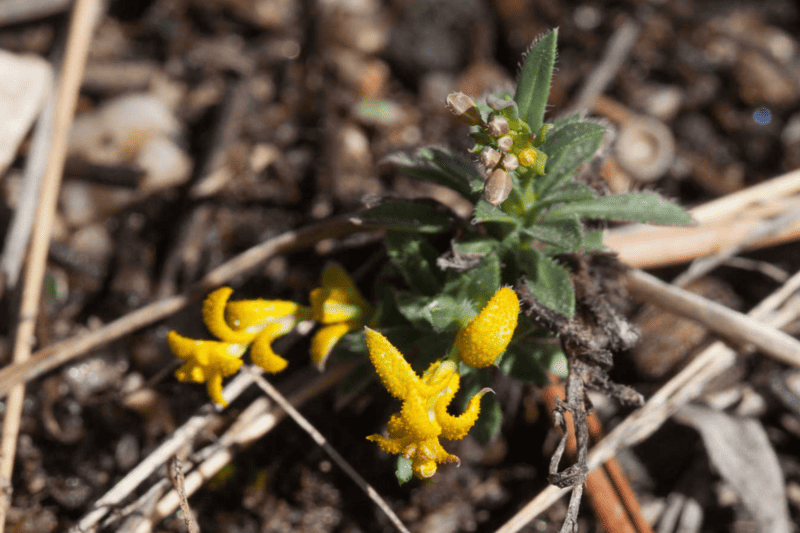
Parasitic Rust Fungus Mimics Flowers
In the tranquil landscapes of Meyers Gulch, nestled near Walker Ranch in the mountains, April unveils a spectacle of spring flowers. Amidst familiar blooms like pasque flowers and mountain ball cactus, an observer notices a small plant adorned with vibrant yellow flowers, its petals bearing peculiar bumps. Initially mistaken for a rare wildflower, further investigation reveals a sinister truth lurking beneath its delicate facade. Photographs sent for identification unveil a shocking revelation: what seemed a wildflower is, in fact, a victim of parasitic invasion. Enter Puccinia Monoica, a cunning rust fungus with a diabolical agenda. Utilizing a range of grasses as its primary host and certain mustard species as its alternate host, this insidious parasite has infiltrated unsuspecting victims like Holboell’s Rock Cress, Drummond’s Rock Cress, and Fendler’s Rock Cress.
Infected plants undergo a disturbing transformation as they succumb to the parasite’s control, altering their physiology to serve its sinister agenda. The parasite manipulates its hosts into creating floral mimics, which deceive pollinators into spreading its spores. These mimics, with their enticing colors and fragrances, attract a variety of pollinators, from halictid bees to ants and flies, unknowingly aiding the parasite’s spread. Furthermore, the parasite coerces its hosts into producing sugary nectar, enhancing the allure of the mimics and ensuring the continued propagation of its species.
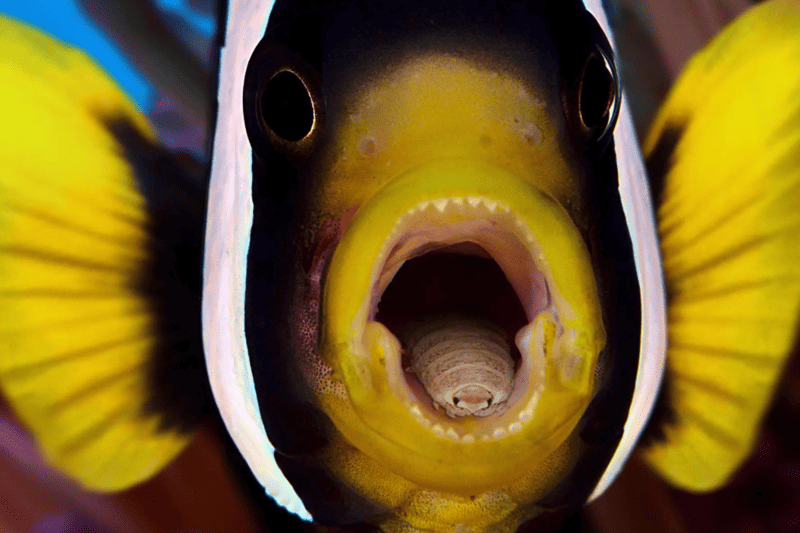
Tongue-eating Louse
Exploring the eerie realm of nature’s undead, one finds a grotesque parallel, where the line between horror fiction and biological reality blurs. In a revolting game of survival, creatures like the Tongue-eating Louse emerge as doers of doom, inflicting terror upon unsuspecting hosts. The fate of a helpless fish is sealed by the insidious embrace of the Tongue-eating Louse. This diabolical isopod, akin to a necromancer of the deep, severs the fish’s tongue, commandeering its host’s very essence. As the tongue withers away, the louse usurps its place, a twisted symbiosis forged in the depths of the abyss. Cymothoa Exigua, the archetypal tongue-devouring fiend, reigns supreme with zombie parasites. Hailing from the Americas, this nightmarish creature embodies nature’s capacity for horror.
Yet, Cymothoa Exigua is but one player in a sinister ensemble of mouth-attaching horrors. Recent research unveils a pantheon of dread, with over a hundred species worldwide, lurking in the shadows of marine ecosystems. Among them, the Australian waters harbor their own horrors, such as the enigmatic Smenispa Irregularis – a parasite with an insatiable appetite and a penchant for versatility. In the murky depths, where the laws of life and death intertwine, the saga of zombie parasites unfolds. From the haunted visage of a fish with an isopod for a tongue to the cryptic infestations plaguing diverse hosts, the spectacle is both mesmerizing and macabre.
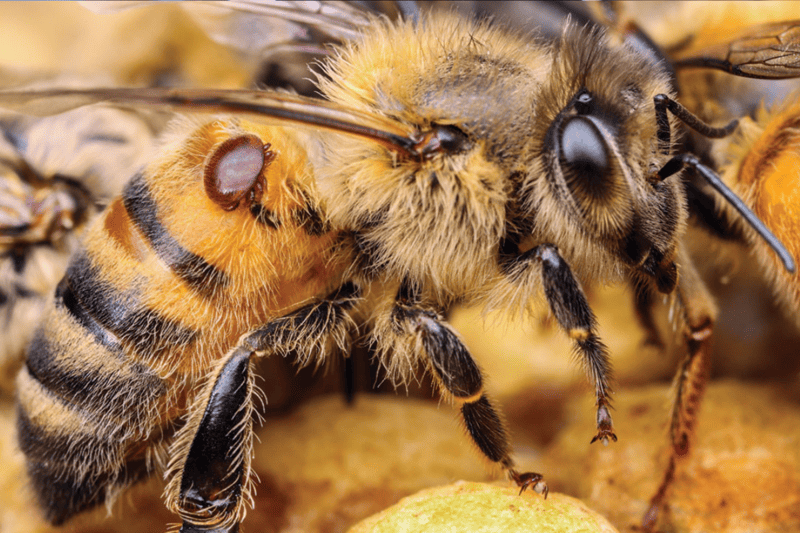
Parasitic Mites in Bees
Varroa Mites are a tiny yet terrifying parasite that is wreaking havoc on honey bee colonies. These minuscule invaders, Varroa Destructor and Varroa Jacobsoni, start small but rapidly escalate their assault, inducing malformed broods and weakening adult bees, ultimately leading to Colony Collapse Syndrome – a chilling phenomenon that spells doom for entire hives. Varroa Mites orchestrate a clandestine takeover, laying the groundwork for their diabolical proliferation within the heart of honey bee colonies. They intricately weave their life cycle, with females strategically targeting drone brood for their insidious reproductive endeavors, perpetuating a cycle of devastation that reverberates throughout ecosystems. As the cycle unfolds, these vampiric parasites meticulously navigate the honey bee’s anatomy, siphoning vital hemolymph while secretly spreading disease, thus perpetuating their reign of terror.
These parasitic mites infiltrate the colony’s inner sanctum, manipulating their hosts at various life stages to serve their insidious agenda. But the battle against these miniature menaces is not lost. Understanding them is key to thwarting their advances. As we unravel the mysteries of Varroa Mites, we unearth insights into the delicate Bond between predator and prey in nature’s grand symphony. Armed with knowledge and determination, we stand poised to defend our ecosystems against the relentless onslaught of nature’s zombies, safeguarding the vital role of honey bees in our delicate ecological world.
Where Do We Find This Stuff? Here Are Our Sources:
Parasite that Alters Mice Minds:
Zombie Ant Fungus:
Undead Crabs:
Rabies In Humans:
Zombie Ant Parasite:
Parasitic Worms Infect Snails:
Zombie Infecting Worm:
Fly Parasite in Honeybees:
Cordyceps Fungi Can Turn Insects Into Zombies:
Zombifying Parasitoid Wasps:
Parasitic Wasp Infects Catepillar:
Twisted Wing Parasites:
Parasitic Worms in Fish:
Parasitic Wasp Infects Ladybugs:
Bacteria Turns Plants to Zombies:
Rust Fungus Mimics Flowers:
Tongue-eating Louse:
Parasitic Mites in Bees:
